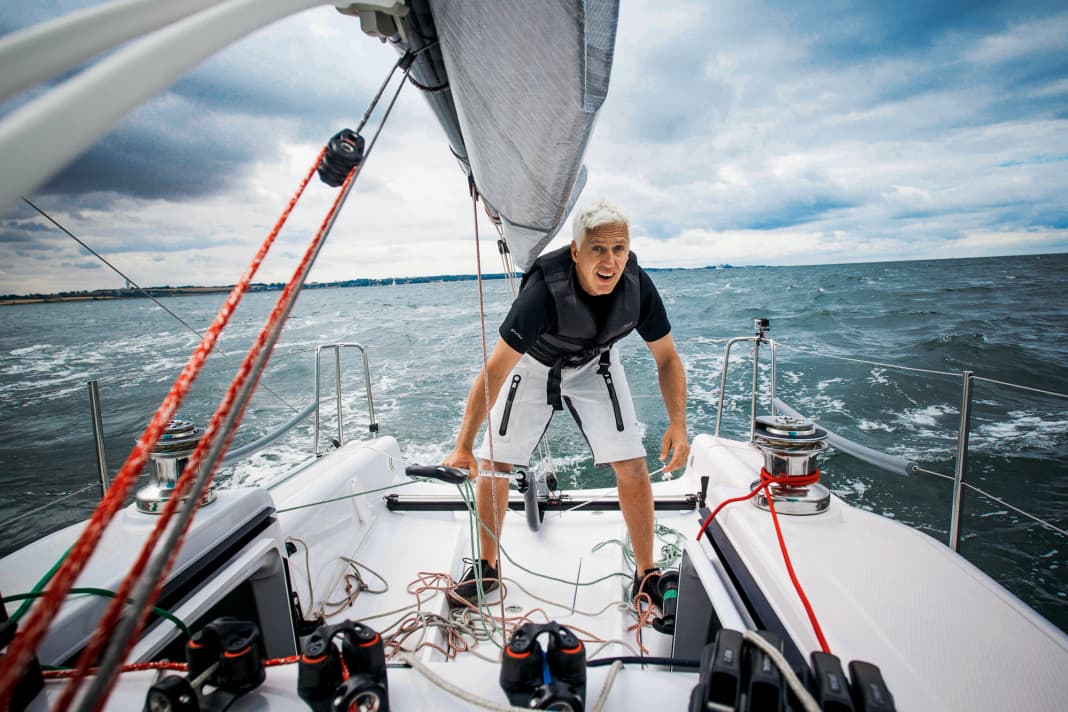





In this article:
If there is one indicator of the fascination of single-handed sailing, it is probably the Silverrudder around Funen. It takes place for the twelfth time in mid-September - and with 439 entries, it is by far the largest solo race in the world. From wooden dinghy cruisers to carbon trimarans, from family cruisers to regatta boats, everything that floats will be at the starting line in Svendborg's city harbour. At the Premier in 2012, there were just a dozen boats.
The participants are looking for "their own little Mount Everest", says Silverrudder inventor Morten Brandt-Rasmussen, describing the unconventional fascination of this race, which is sailed without remuneration or measurement. For most of them, the 130 nautical mile course is "just about arriving, about that one special moment in their sailing season".
The response to the YACHT single-handed skipper training course, which was organised for the first time in summer 2015, shows just how appealing it is to be alone with yourself and your boat for an extended period of time. The high-calibre event, featuring Boris Herrmann, Henrik Masekowitz and Andraz Mihelin, was completely overbooked within a week. The following professional tips are based on the sheer inexhaustible knowledge of the instructors.
Single-handed sailing as a benefit
It seems that being alone at sea has never captivated as many fans as it does at the moment. Regardless of whether skippers are consciously looking for a challenge to prove themselves or due to a lack of crew, whether they only go solo occasionally or as often as possible - being able to do so is definitely an asset. Because sometimes you suddenly and unintentionally become a singlehander. Migraines, seasickness or a fall can affect fellow sailors to such an extent that they drop out completely. In this respect, single-handed competence is an important component of good seamanship.
It is true that solo sailing is generally regarded as a borderline, irresponsible exercise. The World Sailing Association, for example, refuses to recognise single-handed long-distance races because point 5 of the collision prevention rules ("... keep a proper lookout at all times ...") cannot be fully complied with.
The risks are, of course, manageable with prudent ship handling and suitable equipment. This is why single-handed sailing is not contractually excluded by leading water sports insurers such as Pantaenius and is not considered gross negligence per se. A position that has been confirmed several times by case law.
How do you face the challenges of solo sailing?
Nevertheless, sailing without a companion is not entirely trivial. That's probably what makes it so appealing. But how do you rise to the challenge? How do you grow with it? How do you avoid fears and excessive demands?
Ideally out at sea, when all theory fades before the indescribable feeling that everything depends on you once the mooring lines have been cast off. For some, this is exactly what inspires them. Some are irritated and paralysed by this undivided responsibility. Can I do this? Should I? What do I do when storms come up? How do I find peace in between when the boat is bucking? How do I moor safely in a strong crosswind?
There is a lot to say about the right strategies, about consistent preparation, about nutrition, sleep management, navigation and harbour manoeuvres. On the following pages we show basic sailing manoeuvres, break them down into individual steps and explain them in sequence.
Particularly important when sailing single-handed: Keep calm and follow the rules
But the most important tips are the seven golden rules. This is because they describe an attitude rather than a process, aiming at the big picture rather than specific instructions for action. This keeps your mind free for your own experiences, on your own ship, in your own style.
Because single-handed sailing has a lot to do with your personality, your risk profile, your strengths and weaknesses, there is usually not one universal way that applies to everyone. The three instructors of the YACHT skipper training programme have also found different approaches to certain situations on their trips. Instead of offering patent remedies, they propagate curiosity and openness.
More about single-handed sailing:
One of the simplest and most important recommendations is to remain flexible. For example, avoiding a tricky harbour approach at night and anchoring nearby until dawn instead. Instead of trying a harakiri mooring in the box, hang on to a dolphin upwind and wait for the weather to calm down. Instead of laboriously cooking yourself something warm in the dancing ship, lying alongside for half an hour and enjoying your meal while gently rocking.
Everyone has their own personal preferences. With single-handed sailing, you can live out these idiosyncrasies to the full - or even overcome them if you want to. It is therefore much more a mental exercise than a mere skill.
Single-handed sailing: The seven golden rules
- Don't expect yourself to do everything as quickly as with a crew. Single-handed sailing works in series, not in parallel
- Think ahead. Play through what-if scenarios in your head
- Allow yourself unorthodox solutions. Don't stubbornly follow a plan that can't work
- Concentrate on the essentials: What do I want to achieve? How can I achieve it?
- Always keep halyards, sheets and extenders cleanly rigged and ready for manoeuvres
- Prepare your trips well. Allow yourself breaks. Stay fit
- But above all: don't hesitate, go for it! Sovereignty and composure come with experience
One-handed manoeuvring tips
1. turning
One of the easiest exercises in light winds, especially with little overlapping genoa or with a self-tacking jib. But how do you go safely over stays in a strong breeze?
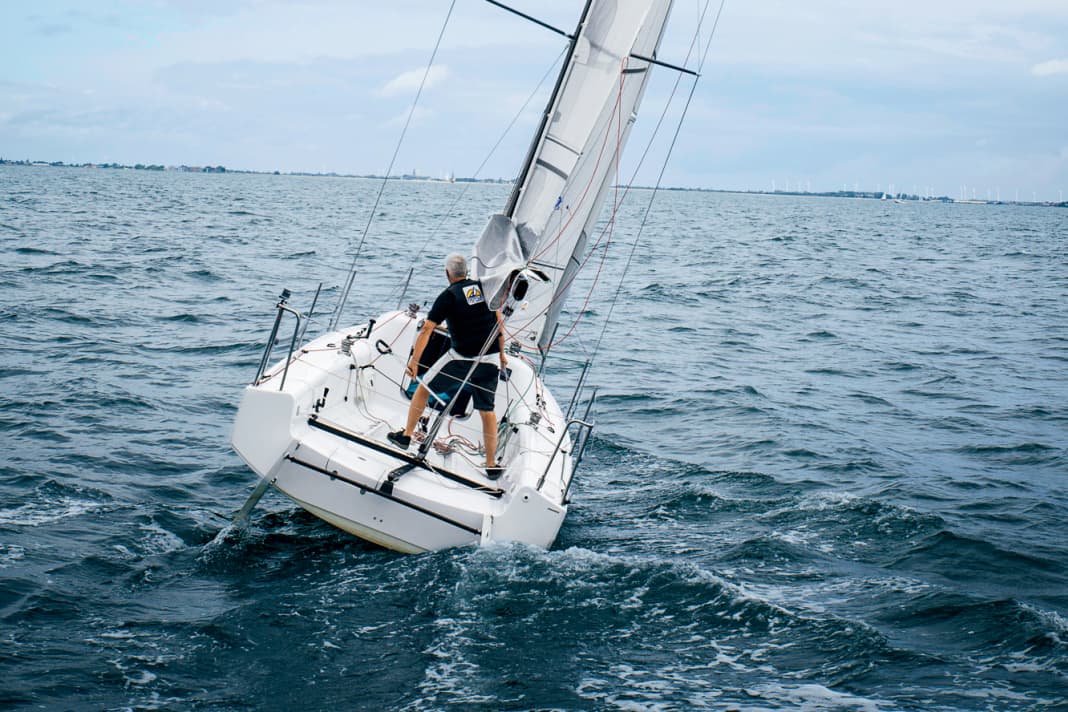





Professional tips for single-handed sailors
- The simple manoeuvre is also quickly mastered single-handed. In moderate conditions, it usually works straight away, even without an autopilot. Practise reefed first if there is more wind
- The key to success is not to lose sight of the rudder or leave it to its own devices when releasing and retrieving the genoa sheets. Otherwise, you will turn over or remain lying on your side
- If necessary, ease the mainsheet and traveller beforehand and possibly also reef the main. This brings calm to the manoeuvre, especially when starting off on the new bow
- With the right hack, a Q-tack replaces the jibe and protects the rig
2. set the gennaker
Whether the space windsail is furled, set in a recovery tube or free-flying: the procedures are almost identical. And easy to do - as long as the sheets, halyard and jib line are clear
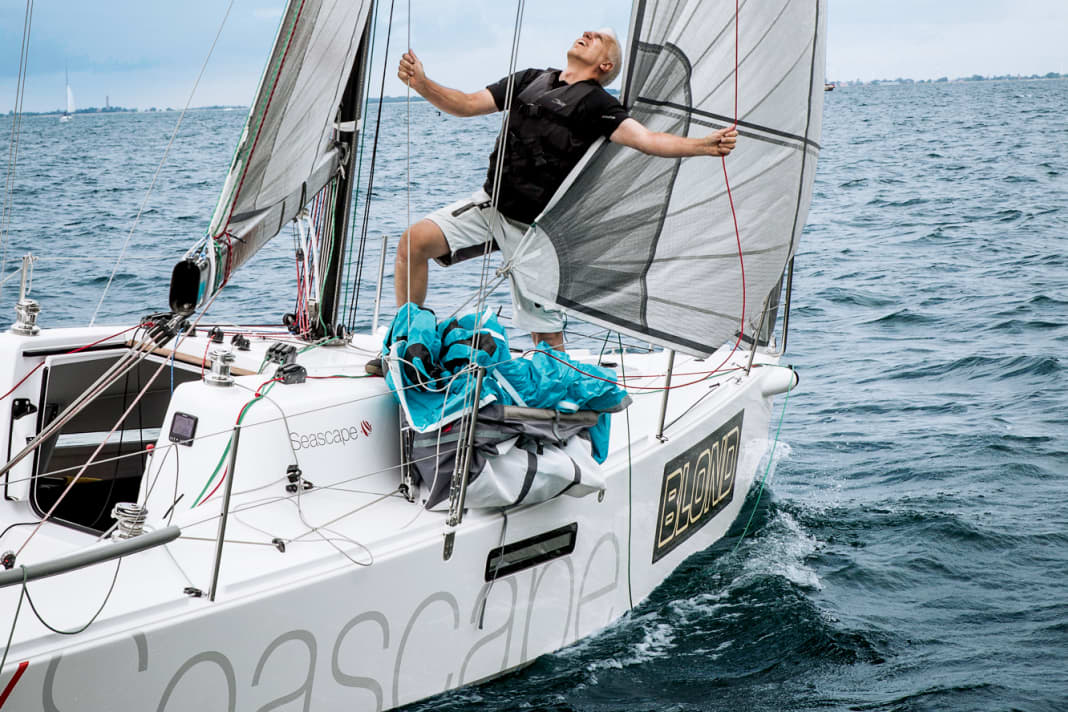





Professional tips for single-handed sailors
- Use a good pack sack with carabiners for the railing and Velcro straps for the head, neck and clew. Choose dimensions that are slightly too large rather than too small
- Do not steer too low for setting (150, with more wind maximum 160 degrees TWA). Otherwise the gennaker may become twisted
- In the event of a wave, bring the jib line just over the bow before setting sail
- Check all line paths. The windward sheet in particular must run out freely when setting
- Set trim markings on the halyard (max. set through), jib line (max./medium) and sheets (max. low/medium). The basic trim will then fit after setting
3. jibe the gennaker
The manoeuvre is considered the supreme discipline for solo sailors. On large yachts and in strong winds, it is a manoeuvre for experts. How to minimise the potential for surprises
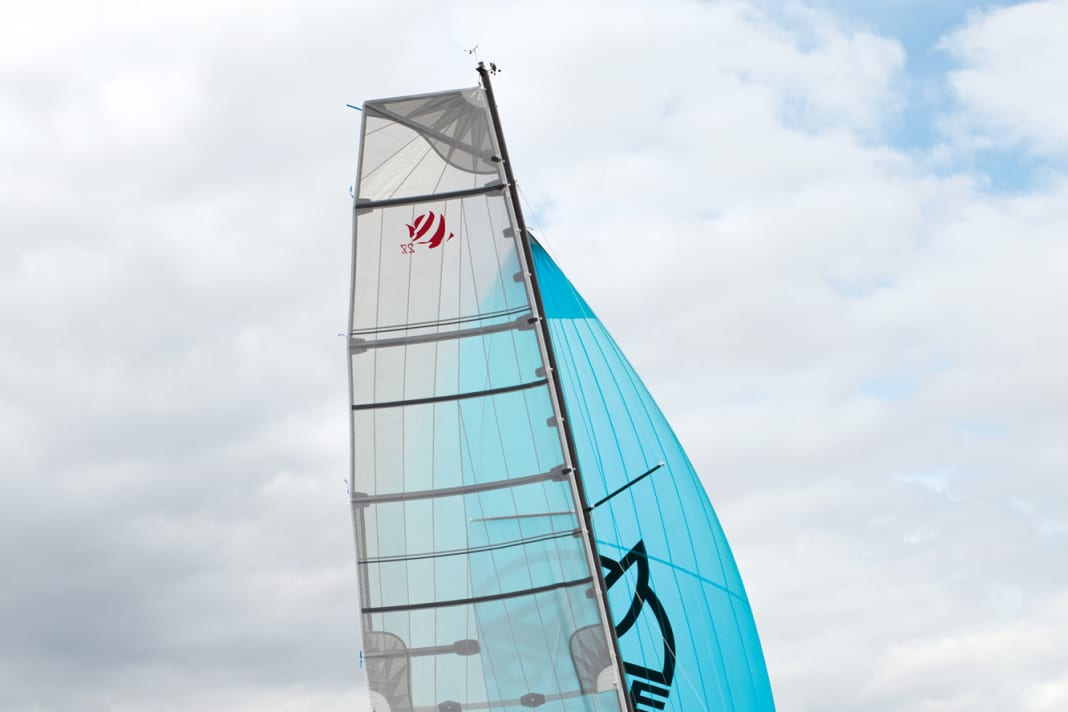





Professional tips for single-handed sailors
- Do not overtax yourself. If you have little practice with a spinnaker or gennaker, you should first practise in 8 to 12 knots of wind
- Maintain control of the rudder during manoeuvres - with tiller steering using your legs, with wheel steering using the autopilot
- Try to keep the gennaker full at all times. If it collapses when jibing and becomes twisted, jibe back or furl a little
- A sunshot, i.e. unintentional alighting, is not a problem. It does happen. However, avoid patent jibes at all costs!
- If there is a lot of wind, first jibe the gennaker (butterfly sailing), then close up the main and hoist it
4. safety jibe
If you sail your gennaker in a furling tube or on a furling system, you can simply take it away briefly for manoeuvres. Even the professionals do this when the wind is strong
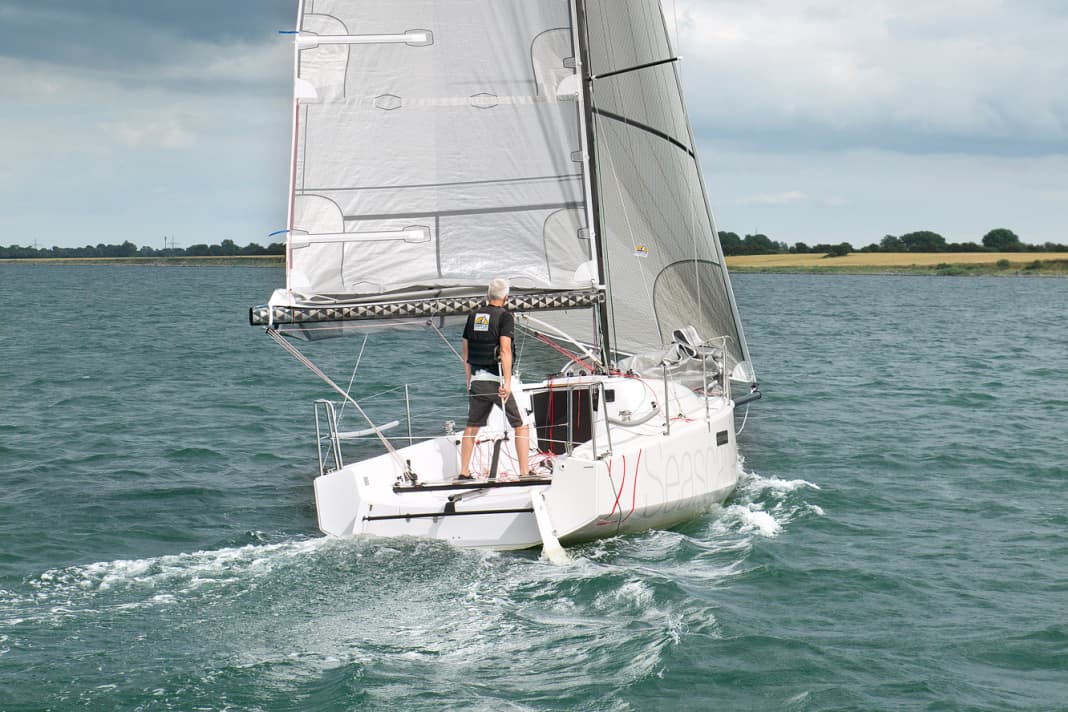





Professional tips for single-handed sailors
- If you only want to buy a room wind sail, choose one with a recovery tube or furling system - you will use it more often
- Look out for high-quality components. Not all furlers and snuffers work perfectly. Smooth running and robustness are equally important for single-handed sailors
- Don't be confused by the term "chicken jibe". The "chicken jibe" is also common practice among experienced soloists. The manoeuvre is not dishonourable, but simply consistently safe and clever
- If you decide to stop using the sail after jibing, take it down. Even when furled tightly, it catches a lot of wind in the rig and can pump or partially untwist
5. recover gennaker
If the colourful cloth has to come off, a firm grip is required. And a trick that may seem unorthodox, but helps enormously: fall overboard!
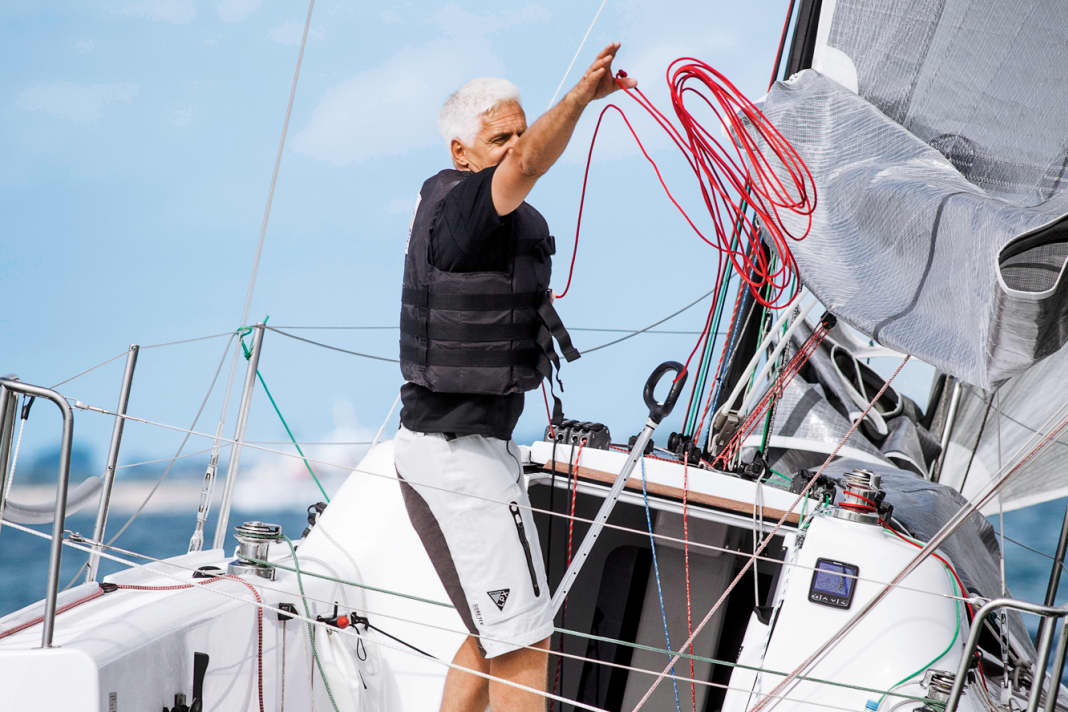





Professional tips for single-handed sailors
- Place the pack sack under the companionway or in the cockpit before retrieving it to make it easier to stow away later
- On yachts over 35 feet with gennakers of more than 100 square metres, you have to tame a lot of cloth. Here you will find it easier with a furling system or recovery hose
- Use tape to protect fittings and edges in the boom, kicker and companionway areas
- Recover the gennaker on the favoured side - where the bowsprit is attached and the halyard cleat is within easy reach
- The neck line must be long enough so that you can pull it into the cockpit
This article about single-handed sailing appeared in issue 20/2015 of YACHT and was revised by the editorial team in August 2023.

